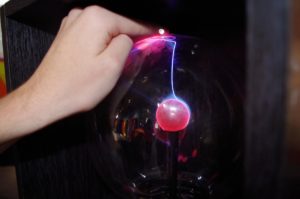 This past year SCOPE took part in the two main events for science outreach held in the city of Glasgow.
This past year SCOPE took part in the two main events for science outreach held in the city of Glasgow.
– Glasgow Science Festival (June).
During one weekend the Kelvingrove Museum in Glasgow hosts researchers from various fields to interact with the general public. It is an excellent opportunity for SCOPE to be able to explain different physical phenomena to everyone interested. This year the title of our activity was “Spilling the beams of light”. With a number of demonstrations and hands-on experiments for children and the entire family we explained how light works. The goal of our show was to cover the key features and properties of light, from understanding how the eye works to holograms. We also included several devices (polarizers, prisms, colours, 3D glasses..), each illustrating different phenomena. Four different set-ups were proposed, attracting around 250 people, mostly families with young children (aged 4-14).
– European Researcher’s Night ¨Explorathon” (September).
“A kingdom of optical illusions” was the title of our activity, and alongside other researchers from different fields, we organized hands-on activities aimed at younger children and families. With our demonstrations we wanted to cover some key features and properties of light, by using holograms, 3D glasses and plasma lamps.
The feedback for both activities has been very positive and the overall experience was excellent.
The 3D glasses workshop continues to be one of the most attractive activities, where children have the occasion to build their own glasses and play with them watching a short 3D movie as well as 3D pictures. Besides learning, children had fun with cutting and gluing their own glasses that they could take home afterwards.
All experiments were handled with kind assistance from the coordinators of the Science Festival and Explorathon, as well as volunteers from the University of Strathclyde’s Physics department and the Institute of Photonics.
